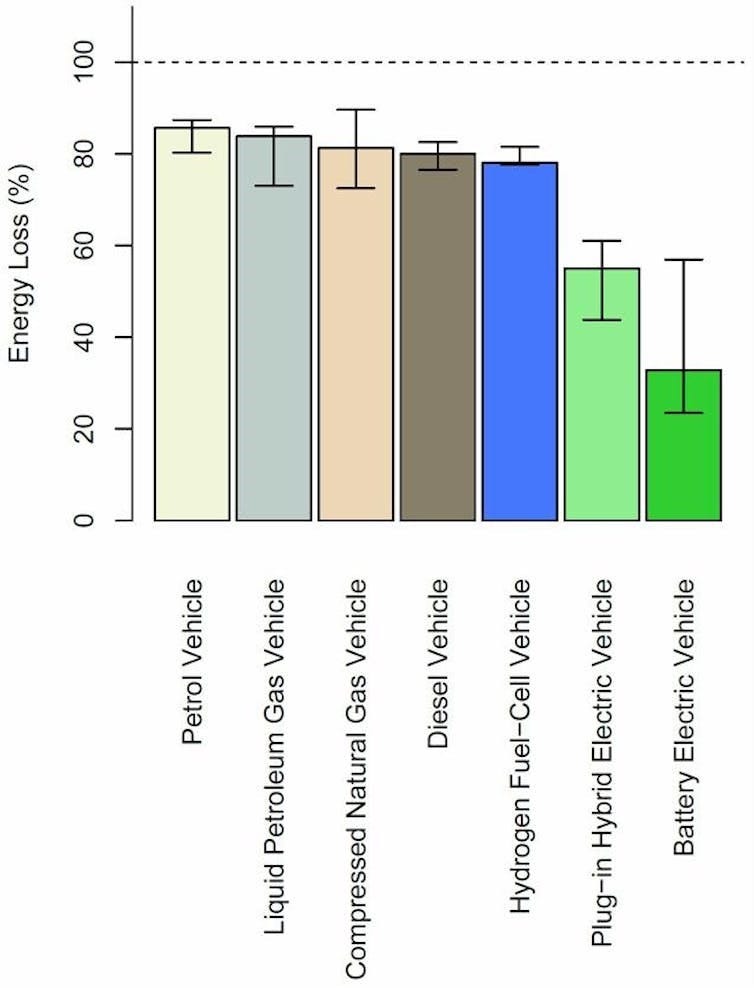Mediocre Metrics 1: Primary energy vs useful energy
Why boasting about inefficiency doesn't make your combustion engine sound any cooler
In many discussions around the energy transition, metrics are thrown around to support or discredit. We aim to highlight a few we find particularly common in a new mini series - Mediocre Metrics - and give an actual definition, what it can be used for and also, how it is misused.
Definition
Primary – energy in available resources before any transformation. E.g., crude oil, coal, uranium or directly produced renewable electricity. Given our energy system is built largely on fossils, this has been a widely used metric.
Secondary – energy in converted form, such as petrol out of a refinery or electricity out of a gas fired turbine.
Final – energy delivered to the end user, for instance petrol at the pump or electricity at your meter (i.e., what you’re billed).
Used – the output you get. For example, petrol combusted in an internal combustion engine (ICE) loses most of its energy as heat vs a battery electric vehicle (BEV) discharging its battery to drive the motor has comparatively low energy losses.
It’s useful
to understand where losses occur along the value chain.
to compare activities on a used energy basis, because that is (generally) most interesting to the end consumer. For example, how much primary energy is required to drive a car 100km. In this case, you would see that for the same used energy you need much less primary energy from renewables than crude oil.
It’s not useful
to compare demand for fossil fuels and direct electricity producing renewables on a primary energy basis. Given the huge energy losses over fossil fuel life cycles, the comparison hardly makes sense.
It’s misused
to abuse the confusion between primary and used energy to compare how much renewables would be required to supply the current primary energy demand for fossil fuels.
to paint a picture that fossil fuels are irreplaceable, when what it actually shows is how inefficient they truly are.
Examples of primary energy reduction
Transport: you don’t need 1kWh of electricity to replace 1kWh of crude oil ultimately used in propelling a car - you only need roughly 20% of that. This comparison is often called a well-to-wheel analysis and serves as a good example (see the chart at the end). E.g.,
1 kWh crude oil in a 14% ICE efficiency means only 0.14 kWh are used for driving.
0.14 kWh delivered by a 67% efficient BEV means only 0.208 kWh of renewable electricity is needed for the same use case.
This ratio represents an 80% reduction in primary energy need.1
Heat: heating with fossil gas (efficiency of 80-98%) vs a heat pump (efficiency of 350-500%) represents a reduction of 75% (1kWh * 90% / 350% ) ignoring transmission.2
Now, consider how much this can be improved by removing transmission losses. Roof top solar can produce onsite and charge your EV or heat your home.
Meaning that even on a cost basis, IF (and it’s a big if) renewables were 4-5 times more expensive than their fossil alternatives in the examples above, they would still be roughly at cost parity while emitting fewer greenhouse gases, lowering explosion risk and using less resources alongside all the other positive externalities.
The biggest loser
Combustion leads to a lot of energy losses when compared to the efficient charge/discharge cycle of a battery.
Source: Where are we heading with electric vehicles? by Whitehead, Smit and Washington3
We recommend following Auke Hoekstra for transport and Richard Lowes for heating on twitter/LinkedIn for anything efficiency, cost and emissions in their fields. For a great and quick visual explainer, check out this video by Deutsche Welle.
See table 1 showing well-to-wheel efficiencies of 14% and 67% for petrol vs battery electric vehicles in https://www.researchgate.net/publication/328782184_Where_are_we_heading_with_electric_vehicles
See table 1 showing an air-to-air heat pump having a minimum required seasonally adjusted coefficient of performance (SCOP) of 3.8 (=380%) in https://publications.jrc.ec.europa.eu/repository/handle/JRC134045



